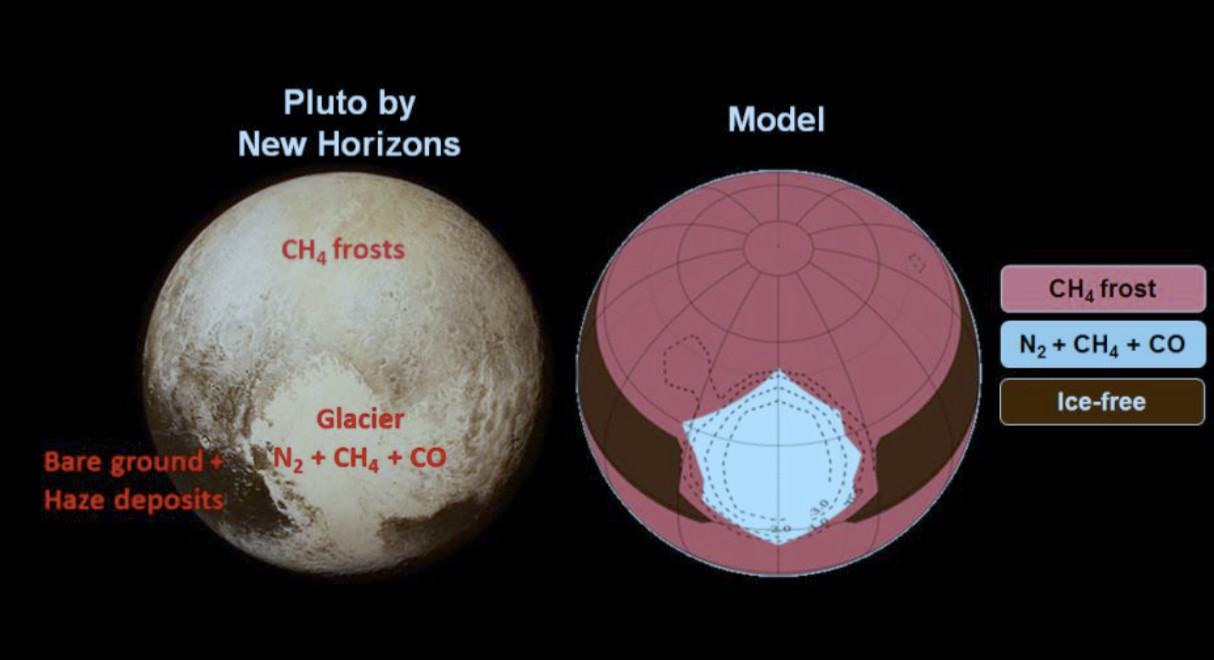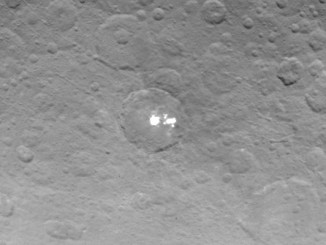
Pluto is a paradise for glaciologists. Among the types of ice covering its surface, nitrogen is the most volatile: when it sublimes (at -235 °C), it forms a thin atmosphere in equilibrium with the ice reservoir at the surface. One of the most unexpected observations from New Horizons, which flew by Pluto in July 2015, showed that this reservoir of solid nitrogen is extremely massive, and mostly contained in “Sputnik Planum”, a topographic basin located within the tropics of Pluto. Methane frost also appears all over the northern hemisphere, except at the equator, while carbon monoxide ice in smaller amounts was only detected in Sputnik Planum.
Until now, the distribution of Pluto’s ice remained unexplained. To better understand the physical processes at work on Pluto, the researchers developed a numerical thermal model of the surface of the dwarf planet able to simulate the nitrogen, methane and carbon monoxide cycles over thousands of years, and compared the results with the observations made by NASA’s New Horizons spacecraft. Their model shows that the solid-gas equilibrium of nitrogen is responsible for trapping the ice in Sputnik Planum. At the bottom of the basin, the pressure of the atmosphere — and therefore of gaseous nitrogen — increases, and the corresponding frost temperature is higher than outside the basin, which allows the nitrogen to preferably condense into ice. Simulations show that the nitrogen ice inevitably accumulates in the basin, thus forming a permanent nitrogen reservoir, as observed by New Horizons.
This scenario shows that there is no need for an internal reservoir of nitrogen ice to explain the formation of the Sputnik Planum glacier, as suggested by previous studies. Instead, well-known physical principles underlie this icy cocktail on Pluto and its spectacular activity, one of the most fascinating in the Solar System. The researchers also predict that atmospheric pressure is at its seasonal peak and will decrease in the next decades, while seasonal frosts will tend to disappear.



